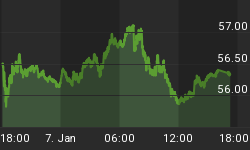Last year was a banner season for the cryptocurrency markets, with bitcoin and leading altcoins frequently taking out record highs. Bitcoin hit $1 trillion in market value for the first time ever; El Salvador passed a new law to adopt bitcoin as legal tender; digital assets, like non-fungible tokens, or NFTs, sold for millions of dollars alongside fine art in major auction houses like Sotheby’s and Christie’s while blockchain-based applications, including decentralized finance, or DeFi, garnered interest from both retail and institutional investors. But 2022–until today–was shaping up as an antithesis of 2021 for crypto investors thanks mainly to unfavorable Fed policy.
Bitcoin and the crypto markets have lately come under heavy selling pressure after it emerged that the Federal Reserve will likely raise interest rates sooner and more frequently than earlier anticipated. Bitcoin had tumbled 8% over the past week to trade at $42,700 just two months after hitting an all-time high of $69,000 in November with analysts warning that it could soon breach the psychologically-important support at $40,000.
It was a sector wide selloff really, with other leading cryptos including ether, binance coin and sol pushing losses of 20% over the past week. According to CoinMarketCap, the crypto market was valued at $1.9 trillion on Monday, down more than $300 billion, or 14%, since Wednesday and more than $1 trillion below an all-time high of $3 trillion in November.
While analysts were sounding the alarm bells over the potential for this situation to worsen, Bitcoin managed to stabilize and gain over $45,000 by mid-day on January 12th, sparking another round of analysis suggesting we might be in for a spike, not a culling.
But in the crypto world, analysts have a hard time catching up to their own theses:
In a research note, Goldman Sachs’ Jan Hatzius warned that rapid progress in the U.S. labor market and hawkish signals in minutes from the Dec. 14-15 Federal Open Market Committee suggest faster normalization, with the central bank now likely to raise interest rates four times this year and start its balance sheet runoff process in July, if not earlier. Related: Amazon ‘Competitor’ Charged With Crypto Fraud Scheme
Separately, Bitbank analyst Yuya Hasegawa has cautioned that bitcoin could continue falling until the broader market fully digests and prices in the likelihood of the Fed hiking interest rates as soon as March. According to the punter, bitcoin could fall as low as $40,000 in the near-term, with Wednesday’s much-awaited government's consumer price index report likely to intensify the price weakness if inflation continues rising faster than expected thus justifying the Fed’s decision to ease stimulus and raise rates.
"Bitcoin remains vulnerable to a breach of the $40,000 level, and it could get bad for ether if it breaks the $3,000 level. The long-term outlook is still bullish for both the top two cryptocurrencies, but the short-term is looking ugly," Oanda Senior Market Analyst Ed Moya wrote in a Friday email.
Bitcoin and crypto buffs can, however, take small comfort in the fact that it’s not just cryptocurrencies getting pummeled by Fed policy--the U.S. stock market is also in the red with the S&P 500 down 1.7% so far this year.

Source: CoinBase
Bitcoin to $100,000
Those who have loyally remained on the bull train, though, were vindicated today.

In a Monday note, Marcus Sotiriou, an analyst at GlobalBlock, said he expects bitcoin will hover around $40,000 even if the Wednesday CPI report reveals that inflation rose more quickly than expected last month, saying higher inflation has likely been priced-in in the latest sell-off.
Indeed, some analysts share Moya’s view that bitcoin’s long-term outlook remains strongly bullish.
In a note to clients last week, Goldman Sachs co-head of global foreign exchange Zach Pandl said that despite bitcoin's bouts of intense volatility, the leading crypto could top $100,000 in the next five years.
Another important take: Pandl believes that bitcoin and cryptocurrencies will increasingly compete with gold as a hedge against inflation.
Unlike their digital peers, gold and silver prices have held up much better despite U.S. 10-year bond yield rising to 1.8% and attracting investors to park their money in the dollar index. Both precious metals are expected to remain volatile ahead of the Fed chair testimony.
By Michael Kern for Safehaven.com
More Top Reads From Safehaven.com:

















